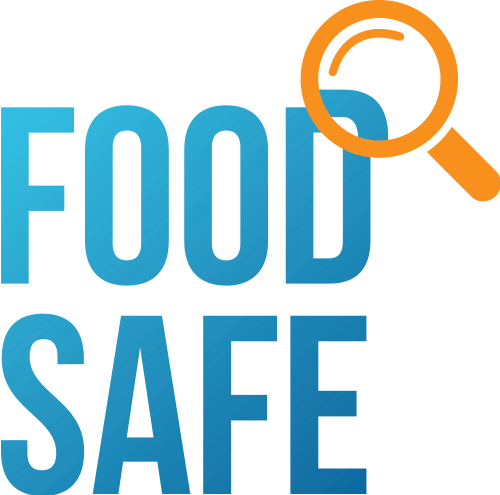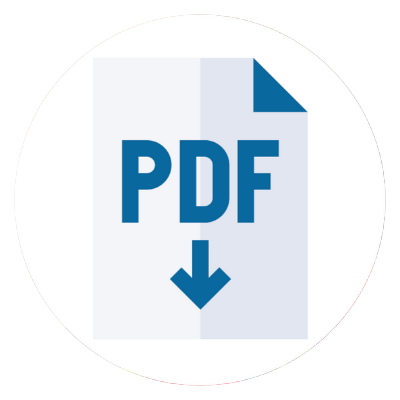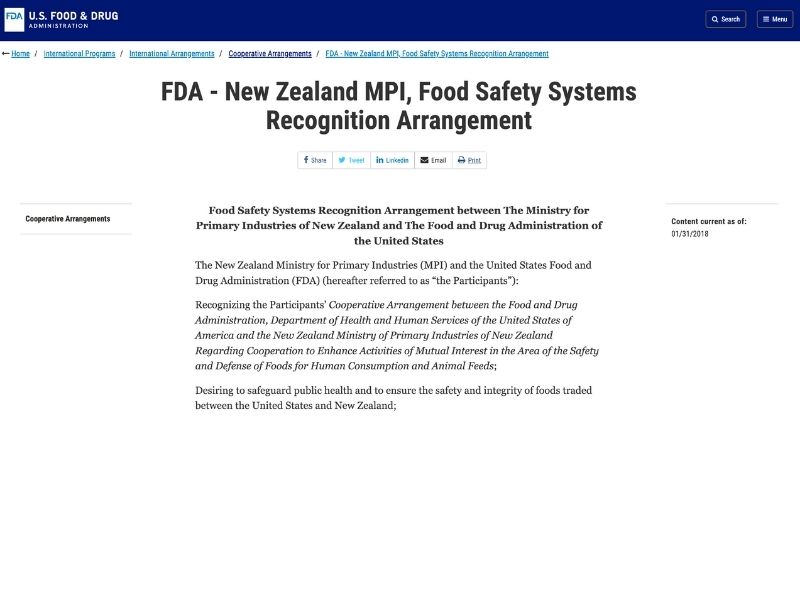Pasteurisation & Heat Treatment Operator Training is for Operators, Supervisors & Managers across Dairy and all Food Sectors.
Course Cost: POA
Pasteurisation & Heat Treatment Operator Training Courses
Our Pasteurisation & Heat Treatment Operator Training & UHT Process Masterclass Courses are designed for process operators and supervisors across the Dairy and all food sectors, covering regulatory standards (MPI – HT Code of Practice, FDA, CFDA, EU) and certification standards (GFSI, BRCGS, SQF, WSE, FSSC 22000).
- Course duration: 1 Day course
- Delivery options: LIVE Online via Zoom or in-person at company site
- Training by: A qualified ISO 22000 and ISO 9001 Lead Auditor with over 30 years’ experience in the food industry, including 15 years specialising in the dairy sector and high-risk manufacturing environments
- Provider Quality Assurance: NZQA-registered PTE
- Our practical, inclusive approach provides learners with:
✅ Clear, easy-to-follow training for all skill levels
✅ Convenience & flexibility (am & pm sessions)
✅ Practical, job-ready skills they can apply immediately
✅ An understanding of the New Zealand MPI – HT Code of Practice or Mandatory Dairy Industry Code for Australian operators
Learners gain:
✅ NZQA Unit Standard 4829 Certificate of Achievement (Unit standard training)
✅ Certificate of Attendance based on NZQA Unit Standard 4829 (Non-unit standard training)
Our training helps companies meet the requirements for:
- Government – MPI HT Codes of Practice for New Zealand operators
- Mandatory Dairy Industry Code for Australian operators
- For other operators:
- FDA, China GB Standards & CFDA as applicable
- Canadian National Dairy Code, Indian FSSAI & Codex FAO
- FSSC 22000 & ISO 22000, BRCGS & SQF – Food Safety Management System Audits
- ISO 31000 – Risk Management
Pasteurization & Heat Treatment Operator Training
New Zealand & Australian Operators
The course provides companies with two options:
- Option 1 (1-day training) Pasteurisation & Heat Treatment Operator Training (unit standard).
On completion, learners gain:- NZQA Unit Standard 4829 Certificate of Achievement
- A practical understanding of Pasteurisation & Heat Treatment
- NZQA Credits 5, Level 3 (registered with NZQA on completion) – NZ companies only
- Option 2 (1-day training) Pasteurisation & Heat Treatment Operator Training (non-unit standard).
Works well as a refresher too.
On completion, learners gain:- Certificate of Attendance based on Unit Standard 4829
- A practical understanding of Pasteurisation & Heat Treatment
Pre-work: Not required for either option.
Course Content:
- Case study reviews of recent food safety breakdowns and learning
- Brief review of Global Standards and Risk Management Programme (RMP) Requirements
- Heat Treatment Code of Practice
- The HACCP principle of Operator Verification in relation to Pasteurisation and Heat Treatment as a CCP
- Operators understand, Heat Transfer & Systems
- Heat transfer mechanisms in dairy operations
- Conduction and convection explained
- Factors influencing the rate of heat transfer & operational limitations
- Regeneration for optimum energy recovery
- Direct vs indirect heat transfer: pros and cons for milk safety
- Indirect heat exchange systems by application, product type, and temperature
- Operation of HTST, LTLT, and UHT sterilisation systems (if applicable)
- Purpose & Effects of Heat Treatment
- Safety and shelf-life extension
- Categories of heat treatment: time/temperature combinations
- End product effects and the time–temperature relationship
- Our Value-Added Competency Approach
- Options for a value-added, customised approach
- Our training shows operators why the CCP matters and how to do it right
- What pasteurisation is and its history
- How pasteurisation impacts microorganism growth in raw milk
- What “thermisation” is, how it differs, and when it’s used
- Why a 24–72-hour heat treatment requirement applies after milking for infant formula (Animal Products Notice – Infant Formula Standard)
- Food Chemistry & Physics Made Practical
- Operators are introduced to key concepts such as:
- Density
- Viscosity (resistance to flow)
- Heat-induced chemical reactions (e.g. Maillard reaction)
- We make these concepts visual and hands-on so that knowledge sticks.
- Operators are introduced to key concepts such as:
- Pre-Start Checks Explained
- Why do checks matter?
- Filter checks
- Leak & CIP contamination checks
- Temperature divert checks
- Cross-checks for temperature variance on HMI screen
- Tolerance deviation checks
- RORP conditions
- Flow divert checks
- Flow Rates & SOPs
We explain:
- Why continuous monitoring of flow rate matters
- How and why the flow rate varies across pasteurisers
- Why do specific temperature & filter size vary
- We also show how milk chemistry links to SOPs:
- Why SOPs reference fat, carbohydrate, or sweetener ≥%
- Why SOPs reference dairy material or total solids particles ≥%
This simplifies the dense information printed across SOPs.
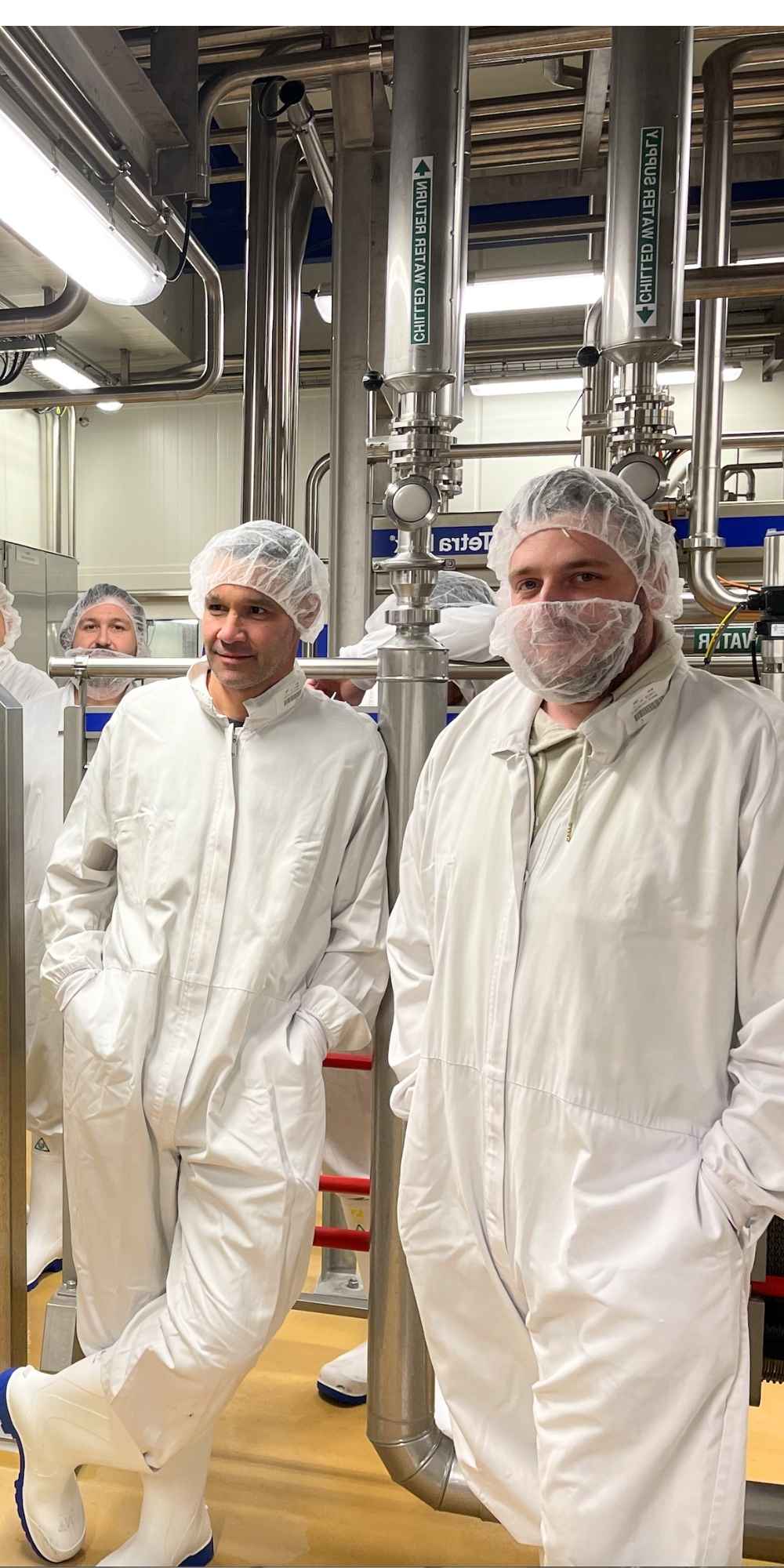
Training can also be further customised to include:
- Equipment & Operator Controls
- Operators learn:
- Types of pasteurisers (plates vs tubes, size/length, plate counts)
- How computerised systems automate heat transfer (Simple Transfer Area equation)
- Which product safety levers remain under operator control
- Regular checks explained:
- Valve actuation, function & leak checks
- Flow meter & transmitter verification
- Temperature probes & transmitter verification
- Infeed filters and pore/micron sizes
- Spore-Forming Thermophiles & Run Times
- Why maximum run times exist in nutritional powder production
- Service media dilution & cross-contamination risks
- Why CIP crossovers and leak checks matter
- For Supervisors & Managers
- We cover:
- Why cross-checking temperature trend graphs matters
- What auditors, verifiers, and regulators expect from operator verification
- How to spot anomalies or data deviations before QC sign-off
- Why trend anomalies must be circled and referenced with a comment
- This means your supervisors can support your compliance story during audits, rather than scrambling for answers.
- Food Microbiology in Heat Treatment
- Operators gain microbiology context, including:
- Pathogens from coliforms & Coxiella burnetii to Listeria, Salmonella, thermophiles, and TB
- How TB became the index organism for pasteurisation
- Potential C. sakazakii (Csaki/CB) risks in powders
- Basics and advanced dairy microbiology
- CIP’s role in preventing Bacillus cereus biofilms
- Soil removal (nitric acid & caustic in CIP)
- Risks of Geobacillus in heat exchanger regeneration zones
- Role of bactofuges: separating microorganisms, risks of high somatic cell counts, desludging issues, and placement failures
- This helps operators respect hygiene protocols, not because “QA said so,” but because they understand the microbiological risks.
- UHT & Sterilisation Training (if required)
- We cover:
- D, F & Z values (simplified)
- Monitoring differential pressures and condensate temperature deviations for sterile status
- Continuous monitoring of sterile air filter & drain temperatures
- Tank volumes and pressure checks for barrier integrity
- Reporting any temperature drops during purge or valve changes
- Good practice: recording CIP temperature, conductivity, and flow next to diverts with ticks, circles, and comments
- Why steam barrier monitoring confirms sterility and cleanliness
- We cover:
- This enables operators to identify deviations early, thereby protecting both sterility and uptime.
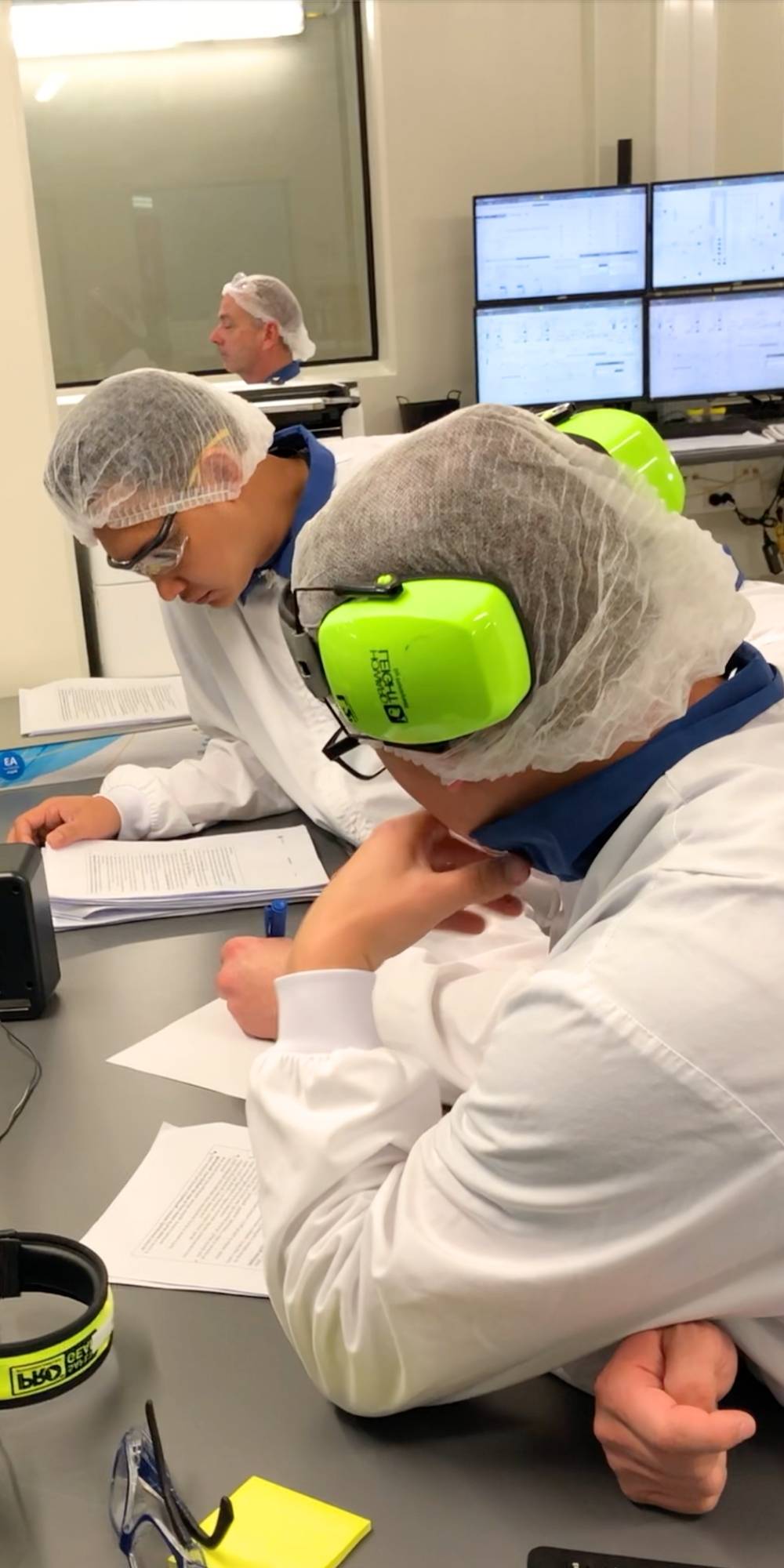
Global Pasteurizer Operator Training – Basic
Course Content (1 Day):
- History and Process of Pasteurization
- Introduction to Food Microbiology & cGMP
- FSMS & Hazard Controls (MCPAN+)
- Codex Alimentarius and/or Provincial Industry Regulation /Codes
- Pasteurization of Product Vat or Other (LTLT, HTST, UHT) e.g. Dairy, Juice, Beverages, Beer, Liquid Egg Processing etc.
- Types of Pasteurisation Equipment, Purpose, Tables: TTHT
- Cleaning & Sanitation & Hygiene Requirements
- Operator Responsibilities & Record Keeping
- Introduction of HACCP & Verification
Training delivered worldwide.
Auckland
Dubai
Vancouver
Beijing
Global Pasteurizer Operator Training – Advanced
Course Content (2 Days):
- HTST/UHT Pasteurization Equipment Types, Separators, Homogenizers.
- Concepts: Microbial load, texture & viscosity, heat transfer area calculation
- Indicating Thermometers & Fail-safes
- HTST/UHT: Controllers, Flow Diversion Valves, Pumps and Monitoring
- Large Systems: Mag Flow Meters, Flow Diagrams, Cross Connections & Operator Verification Trend & Graph Checks
- History and Process of Pasteurization
- Case study reviews of recent food safety break-downs and learning
- Introduction to Food Microbiology & cGMP
- FSMS & Hazard Controls (MCPAN+)
- Codex Alimentarius and/or Provincial Industry Regulation /Codes
- Pasteurization of Product Vat or Other (LTLT, HTST, UHT) e.g. Dairy, Juice, Beverages, Beer, Liquid Egg Processing etc.
- Types of Pasteurisation Equipment, Purpose, Tables: TTHT
- Overview of Sterilizing Symbols: D, F & Z Values
- CIP – Cleaning & Sanitation & Hygiene Requirements
- Operator Responsibilities & Record Keeping
- Introduction of HACCP & Verification
Training delivered worldwide.
Pasteurization Courses Overview
Purpose of Pasteurization & HT
Types of Pasteurizers & Heat Exchangers
Juice Pasteurization Overview
Tunnel Pasteurization Overview
Egg Pasteurization Process Overview
New Zealand Heat Treatment Training Options & Codes
Unit standard 4829
Describe heat transfer and heat treatment in a dairy processing operation
Pasteurization Operators credited with this unit are able to describe:
heat transfer mechanisms; heat transfer and heat exchange
systems; and heat treatment of milk.
For New Zealand operators only
Unit standard 19334
Demonstrate knowledge of continuous flow pasteurisation for milk processing
Experienced pasteurisation operators are able to explain: Heat transfer and heat treatment; requirements for continuous flow pasteurisation systems; and of pasteurisation critical control points and control measures.
For New Zealand operators only
Heat Treatment Code of Practice MPI
Requirements for the design, construction, and operation of equipment, including control and recording instrumentation, used for heat treatment of milk and other liquid dairy material.
Peer-Reviewed Source: MPI
Pasteurisation of Dairy Products
Times, temperatures and validation evidence of control of pathogens during pasteurisation.
Peer-Reviewed Source: MPI
Global & Codex Alimentarius Standards
Codex Alimentarius – Milk and Milk Products
Codex standards for milk and milk products adopted by the Codex Alimentarius Commission.
Source: FAO
Applies to Global & NZ Operators
Code of Hygienic Practice For Milk and Milk Products
FAO code to provide guidance to ensure the safety and suitability of milk and milk products to protect consumers’ health and to facilitate trade.
Source: FAO
Applies to Global & NZ Operators
FDA Pasteurized Milk Ordinance PMO
Grade “A” PMO, with appendices, recommended for adoption in the United States to encourage a greater uniformity and excellence of milk sanitation practice.
Source: FDA
Applies to US Pasteurization Operators
Australia Mandatory Dairy Industry Code
To help farmers and processors understand the code and implement its requirements.
Source: Australian Goverment
Applies to Australian Pasteurization Operators
Global Pasteurization Regulations – China, Canada, India
China GB Standards – Translated
Chinese National Standards applicable to various categories of dairy products.
Source: MPI
Applies to Chinese & NZ Exporters
National Dairy Code – Canada
Canadian technical reference document (not to be interpreted as regulations) that provides guidance to governing bodies, owners, and employees to produce safe and suitable dairy products.
Source: Canadian Government
Applies to Canada Pasteurization Operators
Dairy Industry Regulations – Alberta
Dairy Industry Regulations for Pasteurization Operators in Alberta.
Source: Alberta Government
Applies to Alberta Pasteurization Operators
Food Safety Management Systems Guidance – India
Applicable for food businesses involved in the dairy sector which includes all milk and milk products.
Source: FSSAI Indian Government
Applies to Indian Pasteurization Operators
Pasteurization: Technical Research Papers
Coxiella Burnetii and Pasteurization
Coxiella Burnetii is a heat-resistant organism of significance. This paper discusses the estimation of the efficiency of pasteurization time & temperature combinations.
Peer-Reviewed Source: NIH GOV
Heat Transfer Application
The principles of heat transfer are widely used in food processing in many items of equipment. Discussion of the various heat transfer applications that are commonly encountered in nearly every food factory.
Peer-Reviewed Source: NZIFST
Further High-Pressure Processing Guidance
Heat Treatment, Canning, Commercial Sterilisation, Drying, Acidification, and High-Pressure Processing.
Peer-Reviewed Source: MPI
Microbiological Risk Assessment of Raw Cows Milk
Risk assessment of raw cow milk brings together information on the public health risks associated with the consumption of raw cows milk.
Source: FSANZ Australian Government
Global Quality: New Zealand’s Food Safety Systems Recognition
New Zealand Comparability Determination by FDA
Report on the Comparability Determination of the Food Safety Component of the New Zealand’s Ministry for Primary Industries.
Source: FDA
New Zealand’s Global Role with Codex Alimentarius
New Zealand is a founding member of Codex and chairs two important Codex committees on Milk Products (CCMMP) and Meat Hygiene (CCMH).
Source: FAO
Pasteurization FAQs
What is Pasteurization?
Pasteurization is process of heat treatment using a combination of temperature and time and/or the partial/full sterilization of a product, such as milk, liquid egg, beer, wine, juice to make it safe for consumption. This minimizes the risk of illness from pathogens such as Human Tuberculosis, Salmonella, Coxiella Burnetii, Campylobacter jejuni, Listeria, Thermoduric bacteria and simultaneously improves the product’s quality and shelf-life.
The process was invented by Louis Pasteur in the late 1800s. Pasteur identified the exact time and temperature to kill the harmful microorganisms in the wine that caused illness without changing its taste. He patented the process and called it pasteurization. This process was then applied to other products such as dairy, food products, and beverages across the globe.
What is the legal definition of Pasteurization?
The process of heating every particle of product to the minimum required temperature continuously for the minimum required time in equipment that is properly designed to minimize the food safety risk to the product.
What is the Minimum Time and Temperature Requirements for Pasteurization of Milk?
Pasteurisation is rapidly heating milk to a temperature of no less than 72°C/161°F and retaining it at that temperature for no less than 15 seconds, or rapidly heating milk to a temperature of no less than 63°C/145°F and retaining it at that temperature for no less than 30 minutes.
Code of Practice (COP- Source MPI) / Code of Federal Regulations (CFR Title 21 – Source FDA)
What is a Pasteurizer System?
In the context of a batch or vat, a pasteurizer is not just one piece of equipment it’s a collection of equipment it’s a system.
Pasteurizer systems include but is not limited to:
- A jacketed vessel
- Proper outlet valve of solid stainless steel construction
- Thermometers. There are normally at least three thermometers
- A recording chart
- An agitatorCode of Federal Regulations – Source FDA)
What is disease of wine?
In 1863, Louis Pasteur received a letter from one of Napoleon III’s aides, commissioning him to study the spoilage and “diseases of wine”—a matter of great urgency in France, where wine was vital to the nation’s cultural life and economic prosperity.
In previous experiments, Pasteur had discovered that heating the fermented wine would kill the microbes that caused it to spoil. He wasn’t the first to see that connection. Nicolas Appert, the inventor of in-container sterilization, also known as canning, had already shown that treating food with heat could preserve it. Pasteur’s contribution was to determine the exact time and temperature that would kill the harmful microorganisms in the wine without changing its taste. He patented the process and called it pasteurization. Before long, the process was also used for beer and milk.
To alleviate the problem, Pasteur preheated the wine to 50-60 degrees Celsius which killed the unwanted organisms, extended the shelf life of the wine, and ultimately saved the French wine and beer export industry.
What is Tuberculosis?
Human Tuberculosis is caused by Mycobacterium Bovis that can be found in unpasteurized milk. Source: CDC
The pasteurization of milk didn’t come into practice until the late 1800s. Back then, tuberculosis was commonly carried by milk. A low-temperature, long-time (LTLT) process, also known as batch pasteurization, was first developed to kill the tuberculosis pathogen. The incidence of tuberculosis contracted from milk fell dramatically, and in fact, it no longer makes the Centers for Disease Control and Prevention’s list of food-borne illnesses [source: CDC ].
The first commercial milk pasteurizers were produced in 1882, using a high-temperature, short-time (HTST) process. The first law to require the pasteurization of milk was passed in Chicago in 1908 [source: Sun]. Some people didn’t like the idea of pasteurizing milk in the beginning, for the same reasons that today’s raw milk advocates cite [source: Lewis].
How much does a Pasteurization Course Cost?
Suitable for Global & New Zealand Pasteurizer Operators:
- Basic Pasteurization Course (1 Day): Cost: $299 USD or $395 NZD + 15% GST
- Advanced Pasteurization Course (2 Days): $526 USD or $695 NZD + 15% GST
For our global clients, course costs are approximated USD and can vary with the exchange rates for New Zealand dollars on the day of booking. Your payment transaction occurs on a globally secure EWAY platform.
Do other foods or beverages require Pasteurisation?
While most of us think of milk when we hear the word pasteurization, other foods such as fruit juices, egg products and some alcoholic beverages may be pasteurized. Federal regulations in the United States require dairy products be pasteurized only if they’re to be transported over state lines. The exception to this rule is raw milk cheese that has been aged for 60 days or more. Pasteurization is also required for egg products and most fruit juices [source: Cianci]. Other countries that currently allow the sale of unpasteurized milk include countries in the European Union (except Scotland and Northern Ireland) and Switzerland [source: Cazaux, DBIC].
What are the methods of Pasteurization?
Batch or vat pasteurization is the simplest and oldest method for pasteurizing milk. A product such as milk is heated to 154.4 degrees Fahrenheit (63 degrees Celsius) in a large container and held at that temperature for 30 minutes. This process can be carried out at home on the stove top using a large pot or, for small-scale dairies, with steam-heated kettles and fancy temperature control equipment. In batch processing, the milk has to be stirred constantly to make sure that each particle of milk is heated [sources: Lewis, Sun, Goff].
About Food Safe
Food Safe Ltd is Accredited by the New Zealand Government + is a Category 1 NZQA-Registered PTE. Training complies with the Food Safety Regulations, Verifier Audits right across New Zealand as well as with Codex Alimentarius – FAO and ISO Standards across the Globe.
Our training is trusted by both well-known New Zealand and Global food companies and heaps of small teams too! Our training is science-based on New Zealand regulatory and globally recognised best practices – MPI, FAO, FDA, EU
Food Safe’s advisory committee includes leading experts, quality and compliance managers, and governance experts. For even more information about Food Safe and the companies we work with, click here
Why Choose us for your Heat Treatment Training?
- Complements certification (GFSI, WSE, FSSC, BRC, SQF) and compliance (MPI, FDA, CFDA, EU) requirements
- Is simplified and visual, and supportive of implementing learning back on-job
- Is delivered by a trained ISO 9001 & 22000 lead auditor
- It is delivered by a trainer with first-hand knowledge and experience in high compliance operations where Food Safe operates, such as the dairy, meat, and seafood sector. This allows us to transfer best practices.
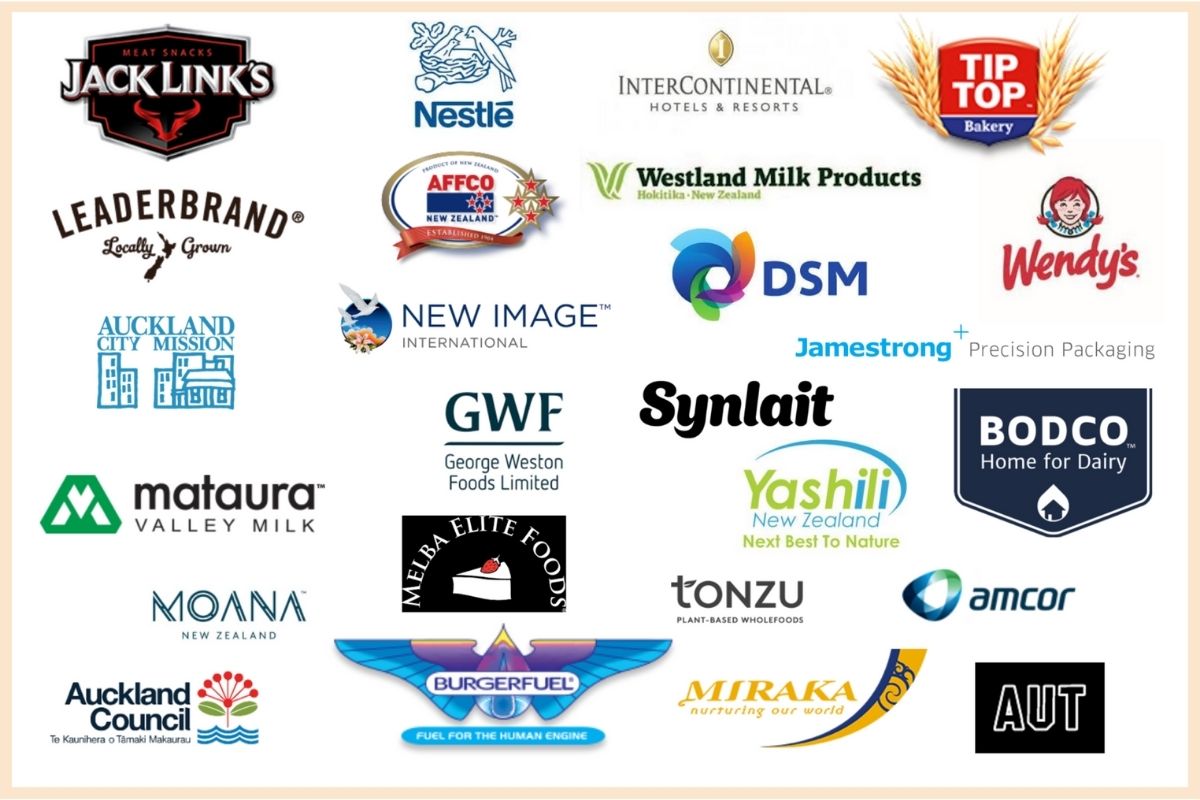
120
427
100
How we work with companies
HOW IT WORKS
Companies we work with





























